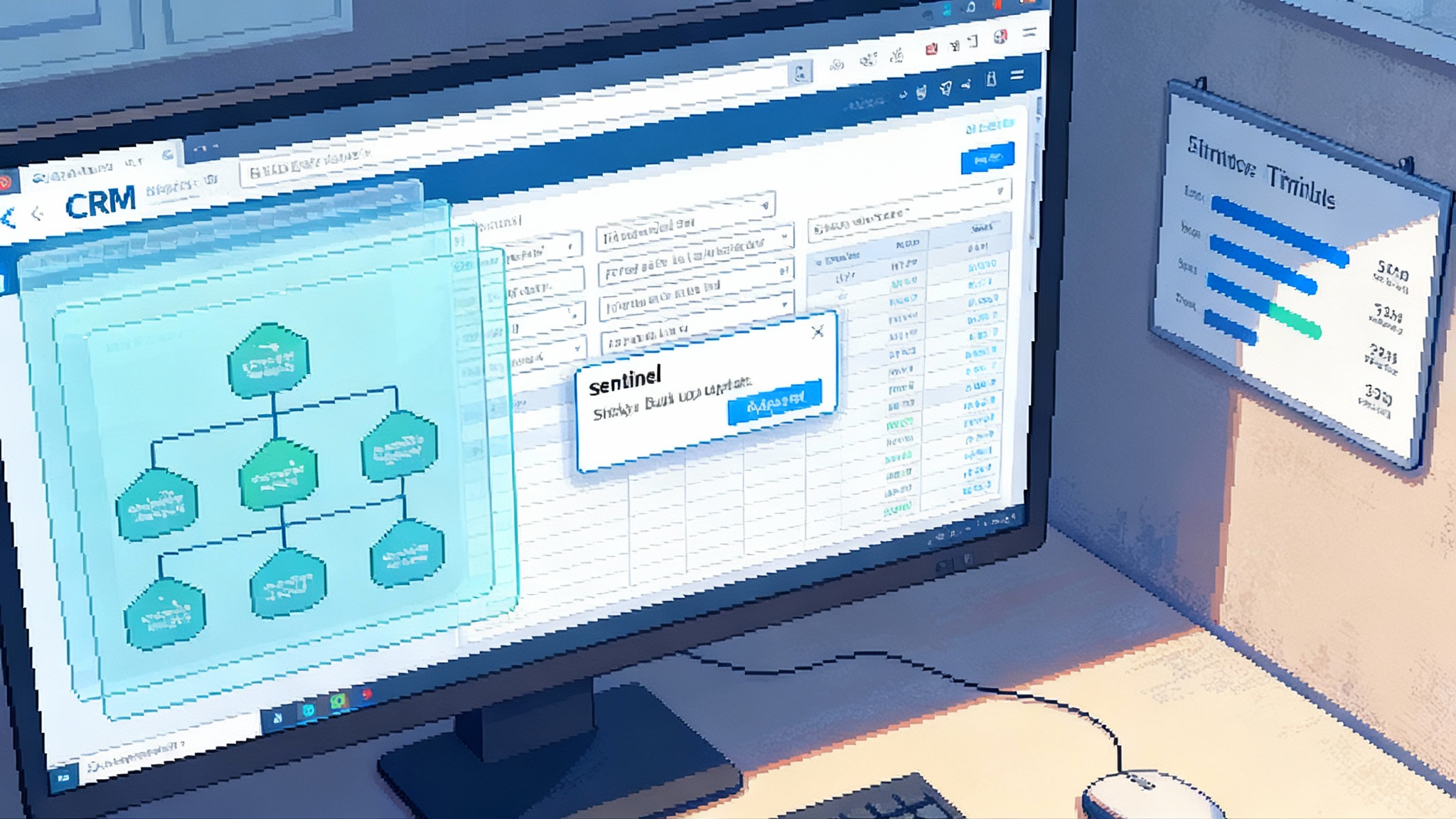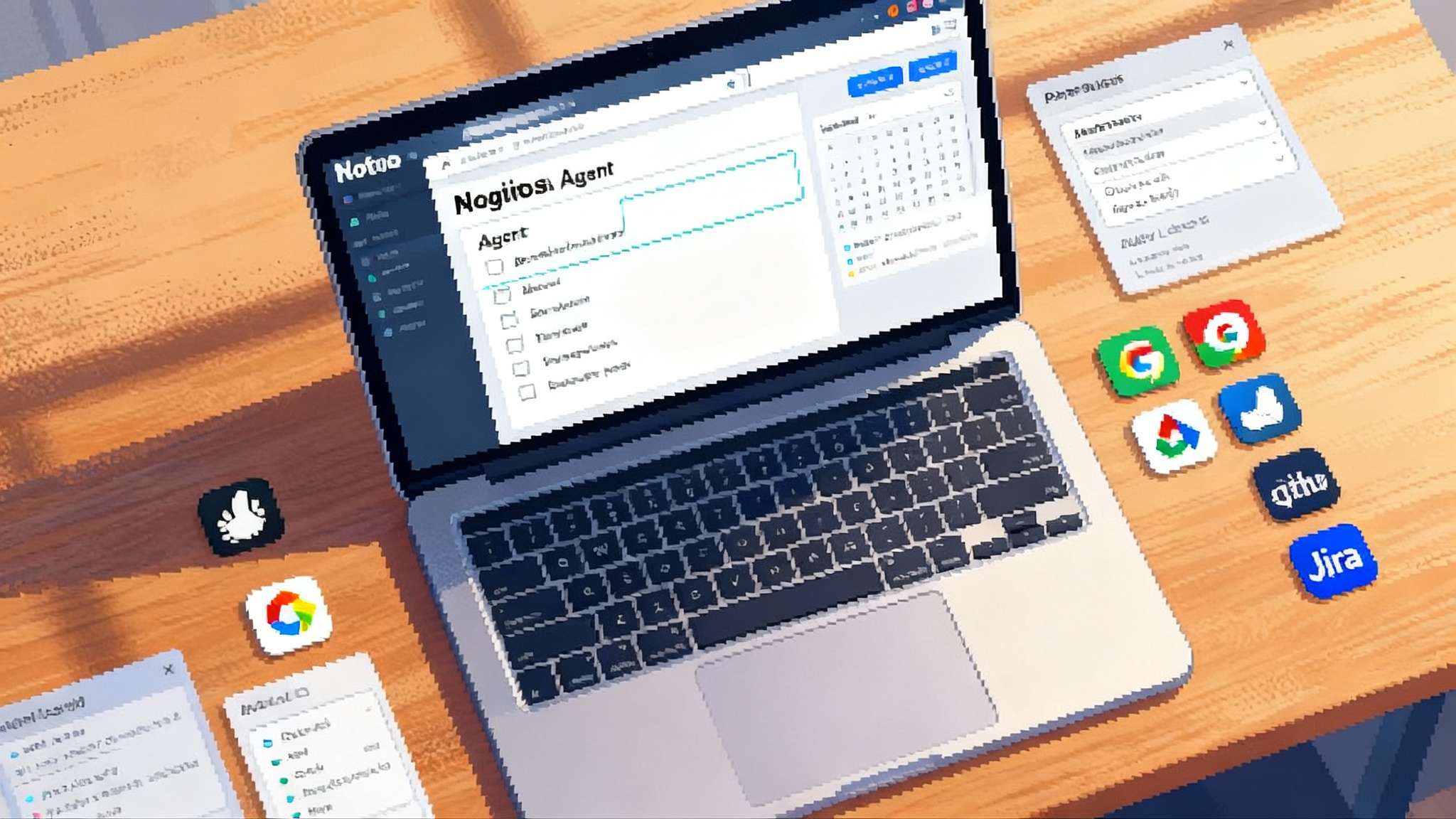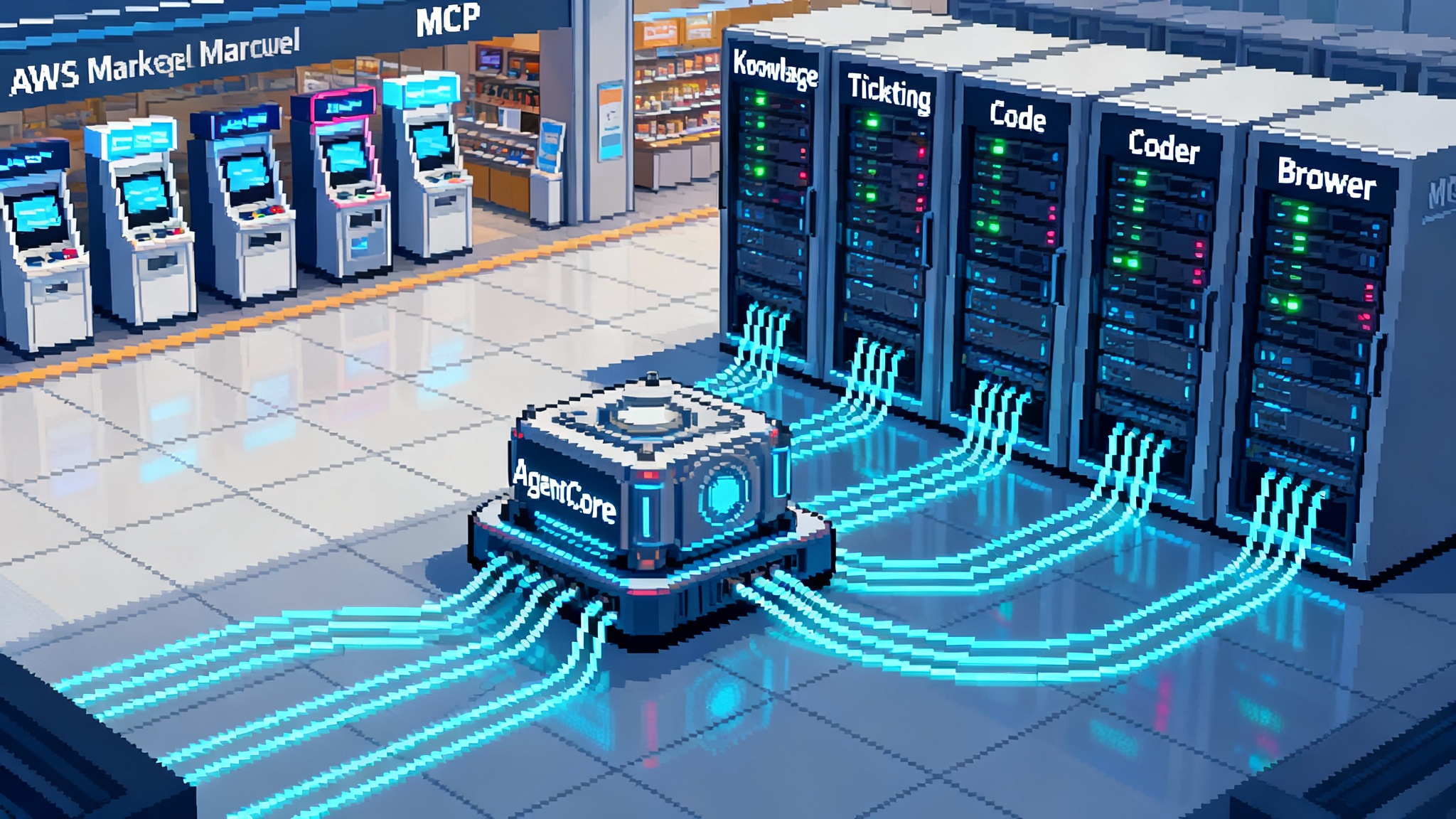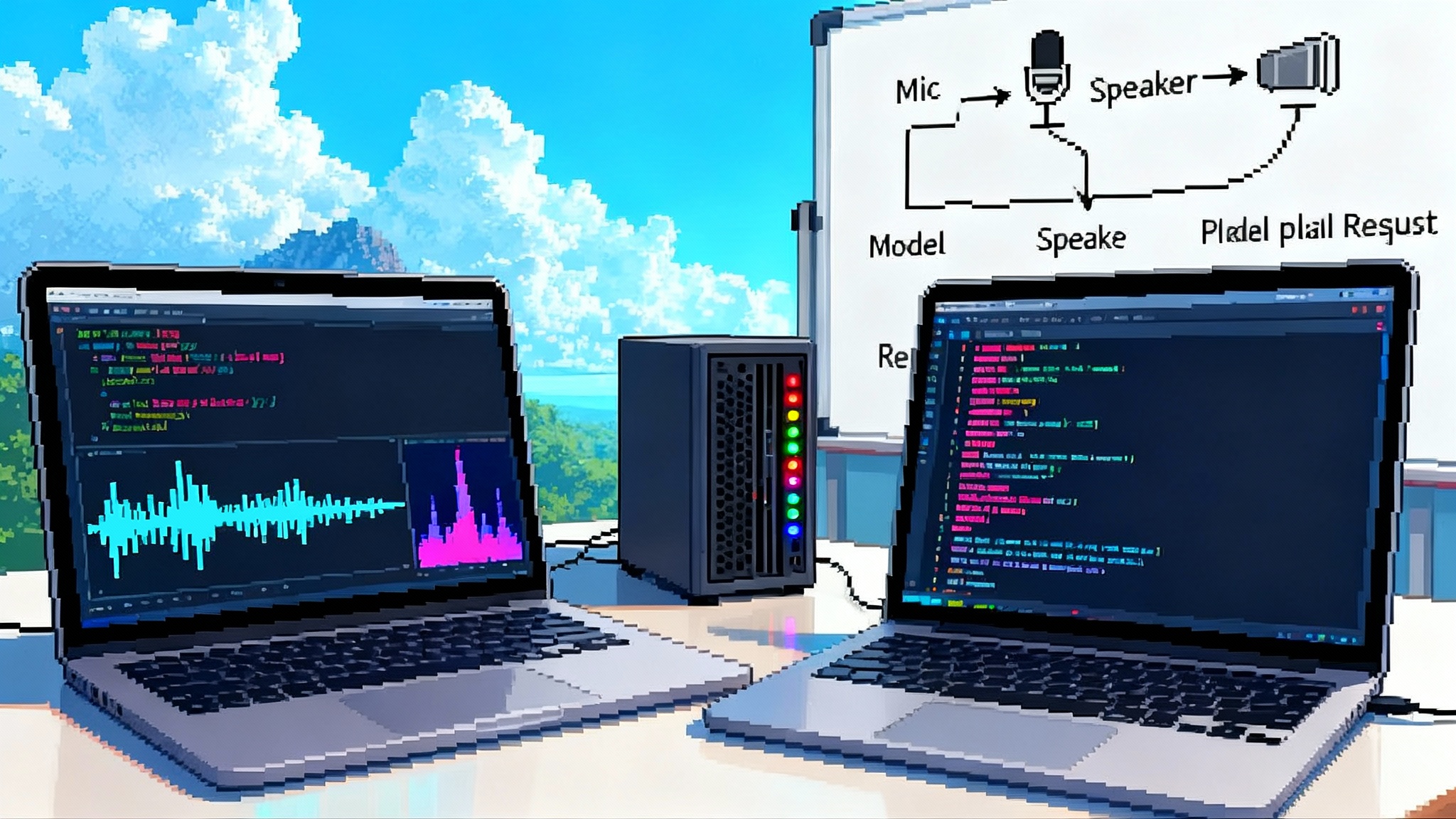Enterprise Benchmarks Force the AI Agent Reliability Reckoning
Enterprise-grade evaluations are puncturing hype around browser and desktop agents. Salesforce’s SCUBA benchmark and NIST’s COSAiS overlays reveal where agents break, which guardrails work, and how to reach dependable automation in 6 to 12 months.

The benchmark moment has arrived
For the past year, product demos of computer-use agents have shown models clicking, typing, and browsing their way through tasks that look like magic, especially as browser agents break the API bottleneck and teams ship Claude 4.5 Agent SDK integrations. Then the projects hit real enterprise software. Reality bites. On September 30, 2025, Salesforce AI Research released SCUBA CRM benchmark. It runs agents inside Salesforce sandboxes across 300 tasks drawn from interviews with actual administrators, sales reps, and service agents. The headline result is stark: in zero-shot mode, leading open source model agents that ace consumer-style tests succeed on fewer than 5 percent of SCUBA tasks. Even stronger closed models top out around 39 percent. With demonstrations added, top systems reach about 50 percent success while cutting time by 13 percent and cost by 16 percent. These are not rounding errors. They are a reliability reckoning.
Benchmarks are not a takedown. They are a flashlight. SCUBA’s structure shows exactly where agents stumble and why those stumbles are common across enterprise software. Combined with a new guardrail playbook emerging from security research and regulatory guidance, especially the National Institute of Standards and Technology, the path to dependable automation is getting clearer.
What SCUBA and its peers actually test
SCUBA is opinionated in the right ways. It focuses on enterprise reality rather than toy tasks. Three concrete design choices matter:
- Sandbox environments. Agents operate inside Salesforce orgs with real object schemas and interdependent configurations. This surfaces the hard parts that demo scripts avoid, like permissions boundaries, field-level security, and the dance between custom and managed packages.
- Persona-driven tasks. Workflows come from three roles that enterprises care about: administrators, sales reps, and service agents. That forces agents to switch between configuration work, record manipulation, case handling, and analytics.
- Milestone scoring. Instead of pass or fail only at the end, tasks are decomposed into milestones. This yields a progress trace that exposes failure modes, such as agents navigating to the right page but applying the wrong filter or editing the wrong record type.
Those choices explain the big gaps between consumer benchmarks and enterprise outcomes. An agent that can book a flight or summarize a web page may still fail to create a validation rule, add the correct field to a dynamic form, and backfill compliant values for 1,200 accounts without breaking sharing rules.
Other contemporaneous studies point in the same direction. AgentSentinel experiments report that unprotected computer-use agents are highly exposed to logic-layer attacks, and even basic workflow manipulations can trigger harmful actions without obvious prompt injection. AgentArch evaluations of different agent architectures find that design choices such as orchestration strategy and memory layout shift outcomes by double digits, yet the best systems still hit ceilings around one third on complex enterprise tasks and roughly 70 percent on simpler ones. The lesson is not that agents are hopeless. It is that success depends on design discipline and guardrails tuned to the realities of enterprise software.
Why agents stumble in enterprise software
If you have ever watched a human new hire learn a complex internal tool, you already know why agents miss. Four root causes show up again and again in SCUBA-style tasks and in real deployments:
-
Hidden state and deferred effects. Enterprise platforms often queue changes, apply asynchronous automation, and surface state across multiple tabs or pages. An agent may click Save and immediately query the record, see no change, and try again. Now you have duplicates.
-
Brittle navigation semantics. Enterprise user interfaces frequently use nested menus, modal dialogs, and role-based layouts. A minor layout difference across profiles or sandboxes sends the agent to the wrong component. The model must infer structure that is not explicit in the Document Object Model.
-
Entangled authorization. The same action can succeed for one user and fail for another because of permission sets, field security, or approval workflows. Agents that do not check and adapt to authorization context will misdiagnose errors and loop.
-
Long-horizon plans with branching. Many tasks require conditional steps across systems. For example, update a product catalog, verify downstream pricing rules, regenerate quotes, and notify account teams in the messaging system only if discounts exceed a threshold. This strains both planning and tool selection.
These issues are not resolved by bigger models alone. They are systems problems. Which brings us to the emerging playbook.
The emerging playbook for dependable agents
Teams converging on enterprise-grade reliability are assembling a set of patterns that work together. Think of this as moving from a talented intern to a well-run operations team. Stack choices such as AWS AgentCore and MCP can help standardize tool contracts and policy integration.
-
Hierarchical planners with commitments. A top-level planner decomposes the task into named subgoals and commits to an interface contract for each step. A mid-level planner maps subgoals to tool invocations or user interface regions, while a low-level controller executes keystrokes and clicks. The key is not just hierarchy but commitments: the planner must state what it expects to observe after each step, so the system can check and roll back when expectations are not met.
-
Specialized grounders instead of generic vision. Rather than asking the model to understand every pixel, a grounder translates user interface elements into typed, queryable objects: list views, forms, picklists, table rows with record identifiers. This narrows the search space and enables precise assertions like update the Stage picklist to Negotiation on Opportunity 006xx and verify the value by reading the API field.
-
Demonstration-augmented runs. SCUBA shows that a small library of high-quality demonstrations has outsized effect. The trick is to index demos by intent and environment fingerprint. When the agent recognizes a match, it loads both the plan and the safe parameter patterns, such as which fields must be set together to satisfy validation rules. This is different from copying a transcript. It is about capturing invariants that make certain workflows succeed.
-
Sentinel guardrails at the point of action. Security frameworks like AgentSentinel argue for intercepting sensitive operations and pausing until a policy-aware audit completes. In practice, the sweet spot is a sentinel service that evaluates the intent, the proposed action sequence, and the current system traces, and then either approves, requires a human check, or rejects with guidance. Think of it as a just-in-time code review for actions.
-
Typed tool contracts and two-phase execution. Move away from free-form tool calls. Tools declare parameter types, preconditions, postconditions, and side effect scopes. The agent first proposes an execution plan that is validated against contracts and policy. Only then are calls bound to live systems in a second phase. This slashes accidental destructive behavior.
-
Memory with provenance. For long tasks, agents maintain a scratchpad that records not only observations but their source and retrieval time. When the user interface or data changes, stale observations are invalidated. This prevents propagation of outdated assumptions.
-
Fast failure and viable rollbacks. The system needs to detect early when a path is not working and revert the environment to a clean state, whether that means deleting test records, reverting a configuration change, or clearing a queue. Rollback recipes should be curated per workflow.
Each pattern is useful alone. Together they turn a fragile loop into an auditable system. That shift is also what security and governance teams need.
NIST’s overlays bring discipline to agent security
On August 14, 2025, the National Institute of Standards and Technology released a concept paper for SP 800-53 control overlays tailored to artificial intelligence. The project, known as COSAiS, proposes overlays for generative systems, predictive systems, and both single and multi-agent systems. NIST’s message is simple and practical: reuse the proven Risk Management Framework and tailor controls for agent realities. The official project page is here: NIST COSAiS overlays.
If you run agents in production, three implications are immediate:
-
Map agent components to controls you already know. The planner corresponds to software modules covered by development controls. Tool runners are execution environments covered by configuration management and least privilege. The sentinel is a policy decision point subject to audit logging and separation of duties.
-
Treat agent actions as privileged operations. Require role-based access, strong authentication for tool execution, and change management for configuration-altering plans. That means short-lived credentials for tool runners, preapproved allowlists of actions per environment, and immutable audit trails.
-
Overlay testing and monitoring on the agent loop. For each workflow, define preconditions, expected observations, and rollback steps. Automate checks in staging and use canary deployments in production. Monitor for policy violations such as mass updates without approvals or cross-object edits that bypass validation.
COSAiS does not add bureaucracy for its own sake. It gives security and compliance teams a common language to accept or block an agent design, and it makes reliability work visible as risk reduction rather than an optional performance tweak.
What the new results actually mean
Read the SCUBA and security results not as a verdict but as a diagnostic. Three takeaways stand out:
-
The limiting factor is not language understanding but environment coupling. Agents fail when the environment drifts under their feet or when the effects of actions are delayed or nonlocal. This is why typed contracts, environment fingerprints, and sentinel approval points help so much.
-
Architectural choices matter more than model duels. AgentArch’s spread across orchestration, memory, and thinking tools shows that you cannot copy a favorite framework and expect it to generalize. Pick designs based on the specific shape of enterprise workflows and the security posture of each environment.
-
Demonstrations buy reliability, not just speed. The SCUBA uplift from adding a small, well-chosen demo set indicates that many failures are about implicit coupling. Demos make coupling explicit and let the system enforce it.
A 6 to 12 month path from flashy demo to durable deployment
Here is a pragmatic plan that teams are using to push success rates from the 30s to the 70s on well-scoped enterprise tasks. It assumes a product owner, an engineering lead, and a security partner working together.
Month 0 to 1: Define the narrowest valuable workflows
- Pick 3 to 5 tasks with clear business value that do not cross more than two systems. Examples: bulk update renewal dates with guardrails, triage inbound support cases to the correct queue, generate and send a compliant quote for a standard product set.
- Capture baselines. Measure human time, error types, and rework. Stand up sandbox environments that mirror production permissions.
Month 1 to 2: Build the bones
- Implement hierarchical planning and a specialized grounder for the primary application. Avoid one-size-fits-all computer vision. Start with typed tools for list navigation, record read, record write, and config read.
- Add a sentinel that intercepts writes and cross-object edits. Hardcode a small set of policies such as no bulk updates without preflight counts and no config changes without human approval.
Month 2 to 3: Seed demonstrations and contracts
- Record 5 to 10 high-quality demos per workflow. Abstract them into plans with preconditions and postconditions. Extract invariant parameters and required field sets.
- Encode tool contracts and enable two-phase execution. The agent proposes, the system validates, then executes.
Month 3 to 4: Expand tests and rollbacks
- For each workflow, define environment fingerprints and drift detectors. When drift is detected, pause and request a human check.
- Create rollback recipes and test them in staging. Practice failure drills.
Month 4 to 6: Push to controlled production
- Run canary deployments for low-risk workflows. Measure success, intervention rates, and policy violations. Iterate on sentinel policies.
- Start cross-system workflows. Introduce memory with provenance and explicit stale-data invalidation.
Month 6 to 12: Scale with safety
- Add durability features. Implement retry budgets, backoff strategies, and idempotency keys for external calls.
- Expand the demonstration library and start mining successful runs for new invariants and checks. Add a human-in-the-loop review for any policy boundary crossings.
- Align controls with NIST COSAiS overlays. Document how planner, grounder, tool runner, and sentinel map to controls. Automate evidence collection for audits.
By month 12, teams that started with sub-40 percent success on realistic tasks often see 70 to 85 percent success on their scoped workflows, with escalation paths for the rest. The higher number requires stable environments, good demonstrations, and a sentinel that enforces policy without blocking low-risk operations.
Buyer questions for 2025 budgets
If you are evaluating agent platforms or pitching your own, these are the questions that separate demos from deployments:
- What is your success rate on SCUBA-like tasks in a sandbox that mirrors our permissions model? Show milestone traces, not only end-to-end wins.
- Do you use typed tool contracts with preconditions and postconditions? How do you validate a plan before execution?
- What is your demonstration strategy? How are demos indexed and reused, and how do you prevent leakage between customers?
- Where is the sentinel in your architecture? Which actions require approval, and how are decisions logged and reviewed?
- How do you detect environment drift and stale observations? What is your rollback story when a step fails halfway?
- Which controls map to NIST overlays for single-agent and multi-agent systems? What evidence do you generate automatically?
Ask for answers tied to real workflows, not abstract frameworks.
What success looks like by mid 2026
A healthy deployment will have a small catalog of agentized workflows with properties you can audit:
- Clear service level objectives. For each workflow, define target success rate, maximum human interventions per 100 runs, and acceptable rollback frequency.
- Policy-aware autonomy. The agent completes the majority of runs without human help, but it pauses on defined policy edges. Human approvals are fast because the sentinel presents coherent plans and diffs.
- Cost and time curves trending down. As demonstrations and contracts mature, average run time and token cost drop.
- Fewer surprises. Post-incident reviews show that failures are either blocked by the sentinel or recovered by rollback. There are no silent data corruptions.
This is not a moonshot. It is disciplined engineering, with benchmarks shining a light on where to invest.
The bottom line
Enterprise agents are leaving the demo booth and entering governed environments. SCUBA’s early results make it clear how far there is to go and where the gaps are. Security research is converging on the idea that guardrails must sit at the point of action, not only in prompts. And NIST’s overlays give technology leaders a familiar framework to accept, improve, or reject an agent design.
The fastest path forward is not mystery sauce. It is a playbook. Break the task into verifiable steps. Ground the user interface into typed objects. Bring a small but sharp set of demonstrations. Put a sentinel on the write path. Tie the whole system to controls you already know. Do this, and the next time someone asks whether agents are ready for enterprise work, you will be able to answer with numbers rather than hopes.








